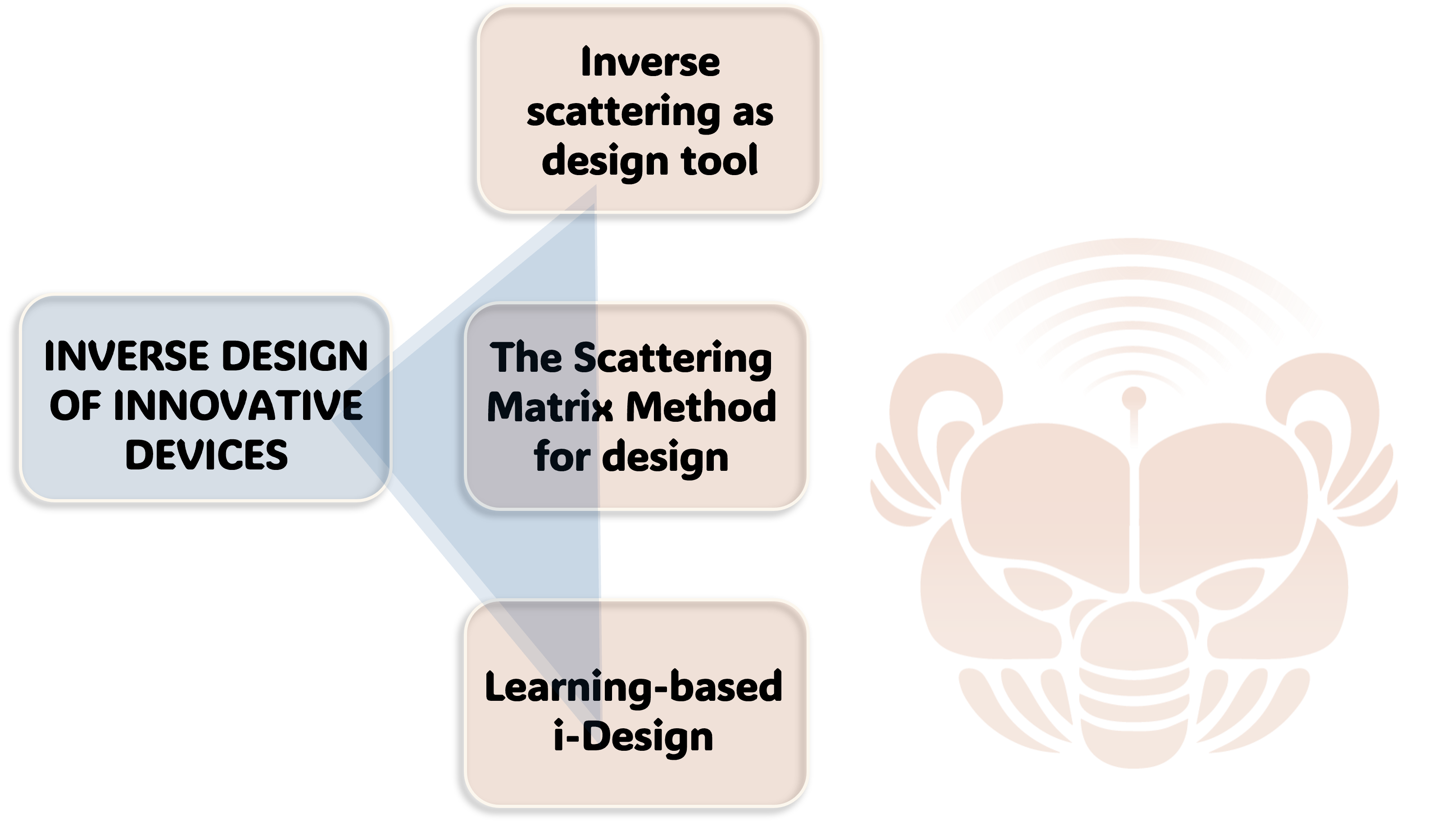INVERSE DESIGN (i-Design) means tailoring the EM field within a structure in such a way its input features are modified at the output. In the last years, i-Design is starting to be explored in a wide range of applications, thanks to the opportunity it provides of designing customized and even more efficient, non-conventional, devices. Hence, by determining a set of unknown device characteristics from a set of given inputs and outputs, i-Design tools overcome limitations of standard design procedures, such as time-consuming trial-and-error simulations or limited validity designs based on closed form solutions.
The LEMMA group is actively involved in this trendy framework thanks to the available know-how in developing optimal design procedures relying on physical features, optimization problems and, recently, deep learning.
In the following, some of the investigated devices.
LENS ANTENNA: antenna whose properly designed dielectric parameters behaviour ensure unconventional radiation properties and multi-purpose functionalities. See “Inverse scattering as design tool” and “The Scattering Matrix Method for design” for more details about continuous and artificial-materials based lenses, and “Learning-based i-Design” for the emerging topic of learning-based designed lenses.
SMART SKINS AND METAGRATINGS: radiating device nowadays of great interest for ICT applications. See “The Scattering Matrix Method for design” for preliminary results.
GUIDING DEVICES: structures allowing the propagation of the EM field through guided paths, of interest for many applications ranging from microwaves to optics and photonic. See “The Scattering Matrix Method for design” for more details about the design of EBG devices, and here for preliminary results about the design of accelerating structures.
INVISIBILITY CLOAKS: volumetric devices whose properly designed dielectric parameters tailor the EM wave paths such to cancel out (or ad-hoc modify) the scattering behaviour of the object to be hidden. See “The Scattering Matrix Method for design” and “The Scattering Matrix Method for design” for more details.

